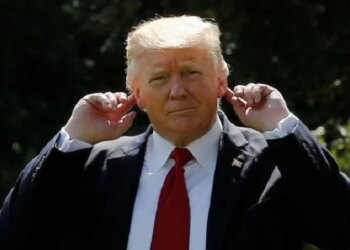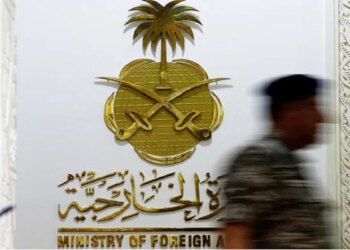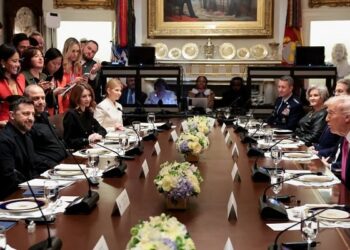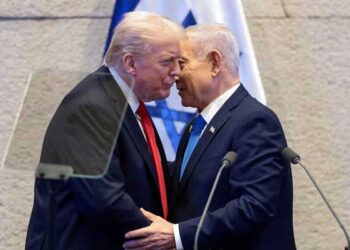Select Language:
Japan observed the 80th anniversary of Hiroshima’s atomic bombing with a memorial ceremony that served as a stark reminder of the devastating consequences of nuclear warfare. The event coincided with ongoing tensions between the United States and Russia, keeping the nuclear “Doomsday Clock” perilously close to midnight.
A moment of silence was observed at 8:15 a.m. local time—marking the exact moment in 1945 when U.S. aircraft Enola Gay dropped the “Little Boy” bomb on Hiroshima. Throughout a scorching morning, hundreds of officials, students, and survivors gathered in front of the memorial cenotaph, with the remains of a damaged domed building standing in the background as a powerful symbol of the tragedy.
Hiroshima’s mayor, Kazumi Matsui, warned of a global trend toward military escalation amid the Russia-Ukraine conflict and unrest in the Middle East, criticizing these developments for ignoring lessons from history. Prime Minister Shigeru Ishiba emphasized Japan’s responsibility to lead efforts toward a nuclear-free world.
The attack resulted in roughly 140,000 deaths by radiation and the immediate blast. Three days later, a second atomic bomb was dropped on Nagasaki, claiming approximately 74,000 lives. Japan surrendered on August 15, bringing an end to World War II. Today, Hiroshima has grown into a vibrant city with a population of 1.2 million, though the memories of that day persist among many residents.
On the eve of the ceremony, people queued to pay respects at the cenotaph. Early that morning, families who lost loved ones also came to offer prayers. Yoshie Yokoyama, 96, arrived wheelchair-bound with her grandson, recalling her family’s suffering: her grandfather died shortly after the bombing, while her parents succumbed to cancer later. Her husband, a wartime soldier, never got to see his family again due to their trajectories post-attack.
This year’s remembrance event included a record attendance of representatives from approximately 120 countries and regions, including for the first time, delegations from Taiwan and Palestine. The United States, which has yet to issue a formal apology for the bombings, was represented by its ambassador to Japan. Notably absent were Russia and China.
The organization Nihon Hidankyo, which last year received the Nobel Peace Prize, represented the remaining hibakusha—atomic bomb survivors. As of March, their number was around 99,130, with an average age of 86. The group called on foreign officials to visit the peace museum and witness the aftermath firsthand.
International leaders echoed the call for nuclear disarmament. The Pope expressed that Hiroshima and Nagasaki stand as enduring reminders of the horrors wrought by nuclear weapons, particularly amid rising global tensions. United Nations Secretary-General Antonio Guterres warned that the very weapons responsible for Hiroshima’s devastation are being increasingly used as leverage in coercive negotiations.
The attacks of Hiroshima and Nagasaki remain the only instances of nuclear weapons being employed in warfare. Kunihiko Sakuma, who survived as an infant, expressed hope that the world could eventually become free of nuclear arms, emphasizing the efforts of younger generations toward that goal.
Despite such optimism, the “Doomsday Clock” recently moved to 89 seconds from midnight, the closest it’s ever been in its 78-year history, reflecting fears of a new arms race. The majority of the world’s nuclear warheads are held by Russia and the U.S., which together control about 90% of the over 12,000 existing arsenals. A June report from SIPRI warned that a dangerous nuclear arms race is unfolding as existing arms control agreements weaken, with all nine nuclear-armed states modernizing their stockpiles.
Recently, U.S. President Donald Trump announced the deployment of two new nuclear submarines following an exchange with Russian officials, underscoring the ongoing complexities of nuclear diplomacy.







